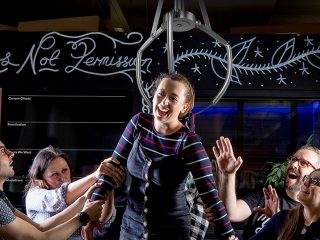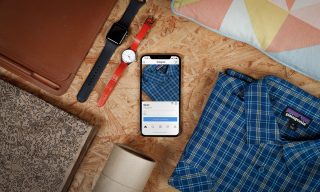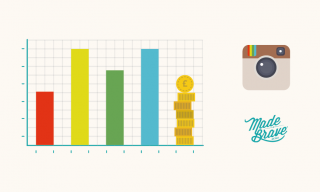With graduation approaching fast (we’re talking MERE WEEKS people!) there’s one big burrito-supreme-sized question every design student has on their mind right now…
“Hmm…now what?”
Well if you’re looking at getting into into your very first design job—do we have a treat for you! Here are 20 top tips from our very own MadeBrave design team!
Your CV and portfolio
1. Tailor your cover letter to your audience. Read through their company website and look at all of their creative. Get a good sense of the brand then make sure it comes through in your CV.
2. Keep things concise.
3. Let your human-ness shine through—tell them what you’re passionate about! Talk about your hobbies and interests. Remember, it’s not just a skillset they’re hiring for, they need to get a good sense of what it would be like to work with you.
4. Formatting! “-“,“–“, or “—“? Keep all of your punctuation and indentations consistent. Check your spelling. Grammarly is a good option, too!
5. Answer the brief! It’s kind of a big deal when it comes to creative work. If you’re given a brief as part of the application process, go back to it constantly and tick every box.
6. Teamwork makes the ream work—yes that’s a print joke, and it works in both cases. If you want to work on a creative team, think of ways to squeeze in the fact that you’re capable of working really well with other people.
7. Hyperlink to any online work, websites, or social channels you reference. Little things like this can help demonstrate that you’re detail-oriented and always thinking about your audience. Also it never hurts to triple check your links to make sure they go to the right place!
The interview and talking through your portfolio
8. As that one old western film cowpoke used to say, “Talk low, talk slow, and don’t say too much”. But don’t say too little, either! It’s tough to strike a balance between talking too much or too little when presenting. If you get that “oh no, I can’t breathe” feeling, slow down a bit.
9. Impress them with your knowledge about their business by showing them you understand the kind of work they aspire to produce—then communicate why you would be a good fit for this reason.
10. Be yourself. For example, speaking like Yoda may seem fun at first (because of course it just is) but there’s no coming back from it once you start. Able to tell you’re not quite being yourself, they will be.
11. Practice presenting your work out loud. Do it several times before you come in. Record it on your phone if you have to. Listen to it on the train. Now put yourself in the shoes of your interviewer who may not have met you face-to-face before—how are you coming across?
12. Fill the space. You don’t need to shout, but there’s no need to be timid. You’ve been invited to interview because your prospective employers are already impressed with you and think you might be a good fit. Prove them right.
13. Give each of your projects the attention they deserve. Remember, it’s not just about what you’ve done—it’s about how you got there. Better to address the brief, concept, process, and challenges for a handful of your best projects than skim through too many, too fast. In other words, did you luck out with a couple bits of decent design or can you demonstrate that you have a solid creative process that you can replicate again and again?
14. Who, what, why, when, and where—anticipate the questions you’ll be asked and have a line prepared for each one. You don’t need to talk like a robot (well, unless you’re interviewing for a job working with robots) but it helps to have a rough idea of how you might approach each question.
15. Be honest about your level of experience. If you over-embellish you might be asked a followup question that you can’t answer. It’s okay to say you don’t know something.
16. Don’t be a Negative Norman. Everyone has negative experiences in their work from time to time, but you should never ever ever (ever) speak poorly about another person, company, organisation, etc. in an interview. If there really is no way to get around it, just say it was a challenge then emphasise what you did to overcome it.
17. It’s about you, but it’s not all about you. Ask the interviewer plenty of questions, too. It’s good to remind them that you’ve researched them as well and it demonstrates your interest. Ask them specific questions about the role—it shows them you’re not just wanting “a job”, you’re wanting THIS job. Some good questions might be: “What are the characteristics of your ideal employee?” or “What are your brand values?” or “What is this company excited about? Where is it headed next?”
18. Confidence is key, but don’t overdo it. You know what you know but don’t pretend to know it all. Say what you know is true, then take a breath and let your work speak for itself.
Other tips
19. Never stop creating. The best designers know they don’t know everything, which is why they’re always keeping sharp by tinkering with new gadgets, mediums, and apps.
20. Keep your portfolio up to date. Further down the line, collecting all of your work together can be a daunting task—especially if you stumble across that dream job and the closing date is tomorrow!
Do you have any top tips for this year’s design students? Tweet us!



